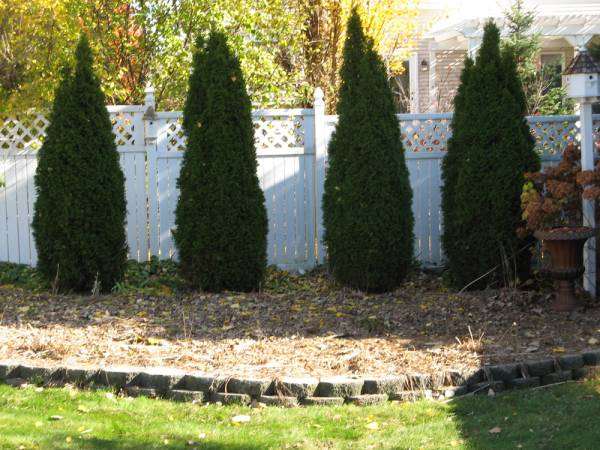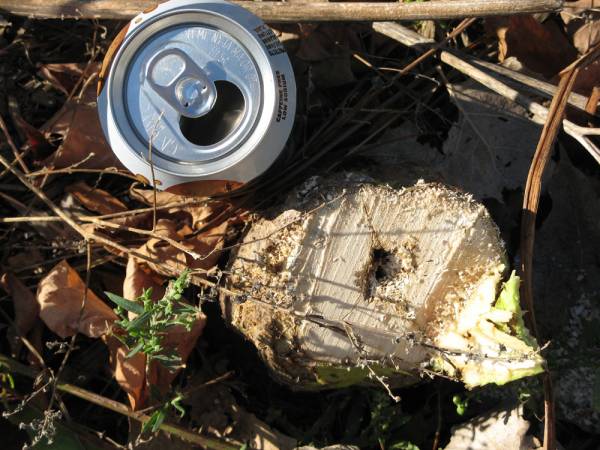Turning a Garden Bed Down for Winter
December 15th, 2008 I’ve been a bad blogger. I’ve been procrastinating. At least a month ago, probably more like 6 weeks, I took some photos to build a blog post around, and then fall happened, and as well business stuff happened where a lot of my time was consumed, and the holidays happened, and well, this advice I’m going to give is somewhat less timely now, but still good.
I’ve been a bad blogger. I’ve been procrastinating. At least a month ago, probably more like 6 weeks, I took some photos to build a blog post around, and then fall happened, and as well business stuff happened where a lot of my time was consumed, and the holidays happened, and well, this advice I’m going to give is somewhat less timely now, but still good.
Today I wish to discuss my back back bed. Yes, two backs, for back of the back yard. This bed has a structural background of four arborvitae (there when we bought the house) and is filled in all the rest (16 feet depth from the arborvitaes to the front probably) with lilies, and daylilies, and rudbeckias, and some sage, and just a whole bunch of different types of flowering perennials that get cut back every year.
Now, typically I cut them back with hand shears, but this year, I was busy, and so in the interest of saving time, I mowed. I mowed the bed down. All the woodier stuff took some work but I got it done. I didn’t bag, I let all the debris fall where it may, a new layer of mulch for the bed. This less-than-gentle approach doesn’t work if you’ve got mixed perennials with shrubs, or if you have labels that could get whacked (all other beds in my property have labels, being more specimen orientated, this bed though, is just a free for all prairie look, formal borders aside). It can also possibly damage plants if you’re using it on delicate plants, but I wasn’t, most of the stuff was dormant already anyways.
After I mowed I spread a full bag of blood meal (nitrogen) and a full bag of bone meal (phosphorus). Why fertilize now going into winter after I just mowed down everything in the bed? I’m glad you asked! Because, that is the point of this blog post. FERTILIZE NOW! All natural organic fertilizers like bone meal and blood meal take awhile to break down and fully release their nutrients in the soil, and the colder it is the longer that can take. By fertilizing now you’re timing it so the soil the will nice and fertile when your spring stuff starts emerging. If you plan to use these organic fertilizers then, there will be a delay before they become effective and you may not want that. When you’re using all natural fertilizers think a season in advance. Fertilize for Spring in Winter, for Summer in Spring, and for Fall in Summer.
If you’re using synthetic fertilizers, which are already typically in a form that plants can use, you don’t need to worry about this, they act quickly and you can wait until Spring to fertilize, but if you want to use natural stuff, use it now.
Consequently, I also shredded up a 32 gallon can of shredded leaves and spread those on top of the same bed after I put down the bone and blood meal. So it has a layer of mower clippings, the bone & blood meal, then a layer of shredded leaves. I figure the bed will either perform really good next year, or really bad. We’ll see. I also plan to plant a dwarf apricot tree right in the middle of it next year.
Now, in completely unrelated news. When tidying up my yard for Winter I of course had to cut down my massive sunflowers. Since I had blogged about them before I thought perhaps I’d include an update showing just how massive the trunks got (and yes, they’re trunks, not stems, not at this size). It is about 150% the width of a popcan, and this was growing in crappy soil between the sidewalk and the road.


December 16th, 2008 at 4:08 am
this article/posting is really useful; thanks.